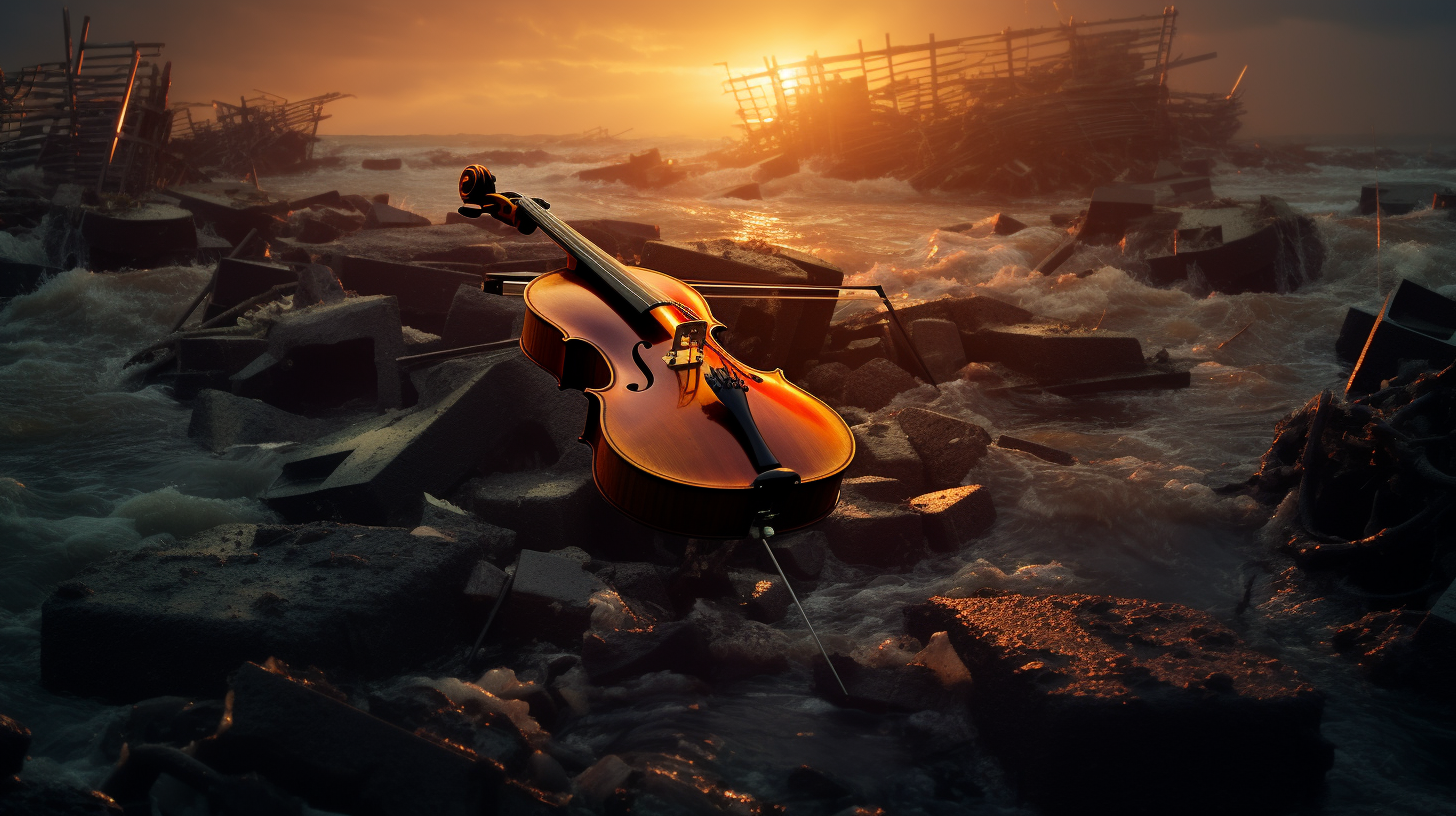In a world unrecognizable to the eyes of those that came before, the ruins of humanity’s once great civilizations have been reclaimed by nature’s embrace. Where towering skyscrapers once scratched the skies, now colossal trees reach for the sun, their roots entwined with steel and concrete. Survival’s Symphony is not performed by man, but by the elements themselves, a composition that has weaved its way through the rubble of our neglect.
The air carries the haunting melodies of forgotten cities, where the whispers of the wind replace the cacophony of traffic. The oceans, no longer choked by plastic, sing a mysterious tune – waves crashing against the reclaimed shores tell the tales of the deep. Amidst this rebirth, creatures that once lurked at the edge of extinction now flourish, their calls and cries adding to the chorus of this post-human world.
In this unforgiving yet strangely harmonious landscape, one would expect silence – yet there is sound, life, and an intense beauty in desolation. It’s a melody played on the instruments of revival: insects buzzing in the shadows of forgotten playhouses, birds weaving nests in the hollow frames of abandoned vehicles, and the relentless growth of greenery through the cracks of our desolation, creating a relentless rhythm of persistent life.
Imagine the rhythmic drip of water in submerged subway stations, giving a beat to the Earth’s tune, a subtle reminder of the day when the seas rose and took it all back. Fishes dart through the translucent waters of what were once bustling marketplaces, a visual melody of color and movement. Packs of animals roam free across the vast expanses, rewilded plains that once served as manicured parks, their footfalls a soft drumming on the soil.
Even the most ardent defenders of nature could not have predicted this surreal symphony – a testament to Earth’s resilience. The planet, once on the brink of ecological collapse under human hands, has become a gallery of life’s tenacity and adaptability. A chorus of frogs in an amphitheater, once the epicenter of cultural expression, is a sharp irony that even the most somber poets could scarcely imagine.
There is an unspoken awe in the observation that, despite being born from the ashes of a world that could have been, this post-human Earth is not silent. It’s as if the very soul of the planet is humming, buzzing, and thriving in a way that admonishes our absence. Survival’s Symphony is a symphony that was always here, waiting in the wings, quietly ready to take center stage in humanity’s final bow.
As the sun sets on this uncanny world, casting shadows over the harmonized chaos, we’re reminded of what was lost: the human heartbeats that once synchronized with Earth’s own rhythm. Yet the dusk also illuminates the pulse of the wild, untamed, and beautifully unstoppable life that dances forward. As the last light fades, the crescendo builds – an overture of insects shimmering in the twilight, the soulful howl of nocturnal beasts proclaiming the night, the ceaseless growing of the flora – inscribing its eternal narrative that life, indeed, goes on.
No more are the sounds of industry, the clamoring for resources, or the blaring alarms of environmental disaster. In their place is a kind of pure existence, a natural order that finds balance, irony, and even mockery in the remnants of our anthropocentric hubris.
The era of human conquest is at an end. Survival’s Symphony speaks of a different conquest – a quieter, yet more profound triumph of biodiversity and elemental forces over the feeble constructs of man. This unexpected harmony, born from the depths of our collective disregard, is not a swan song. It is a powerful anthem of revival, a resounding call to witness the resilience and the astonishing spectacle of life on a post-human Earth.
